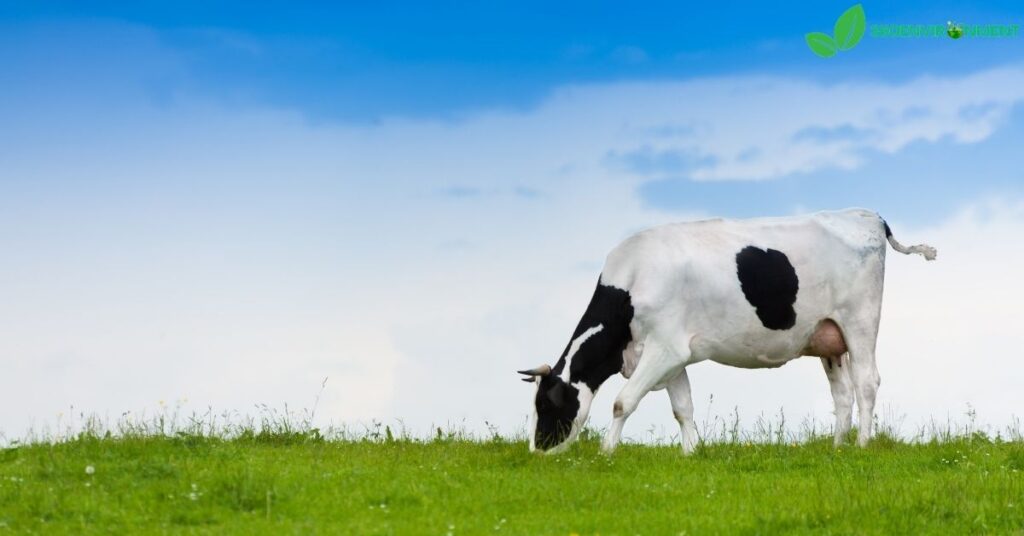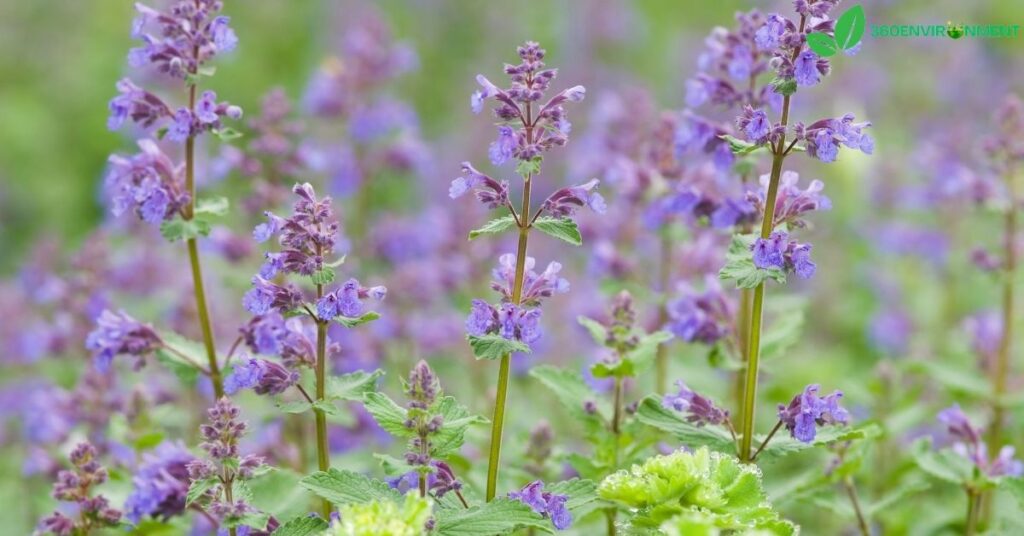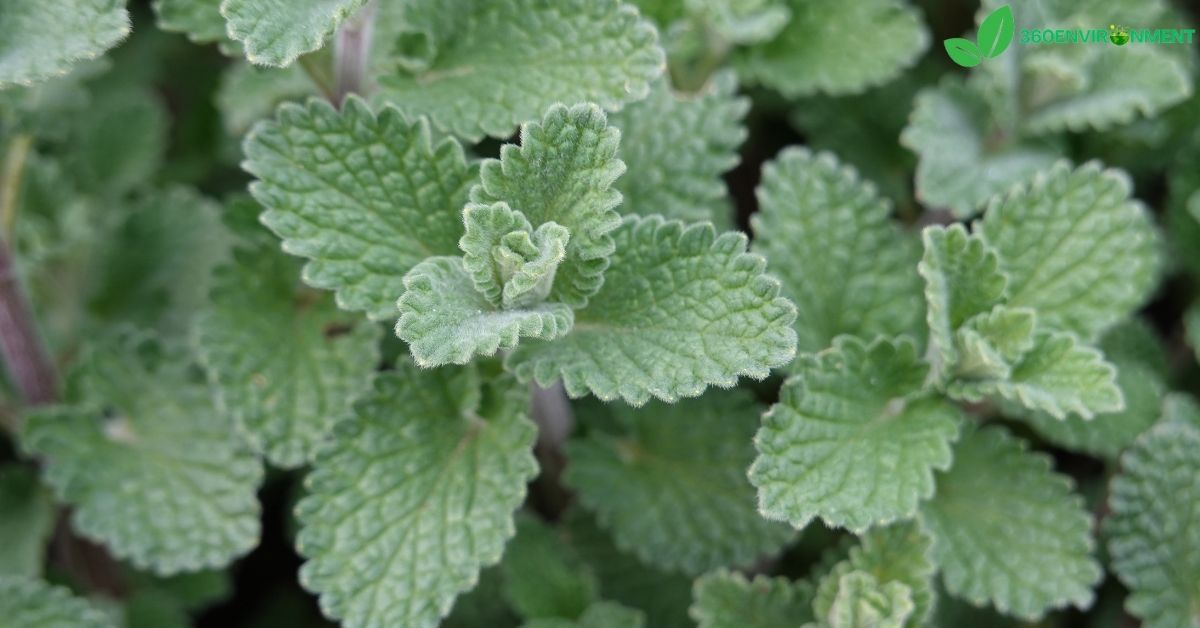Cows and their diet have long been topics of interest, especially for farmers, animal nutritionists, and environmentalists. While cows primarily graze on grass and forage, people have often wondered whether they can consume other plants, like catnip. Can cows eat catnip? This question touches on multiple aspects of cow health, plant biology, and broader environmental implications.
This article explores the topic in-depth, focusing on the biological and environmental interactions between cows and catnip (Nepeta cataria), the potential benefits or risks of catnip consumption by cows, and the role this plant could play in agricultural systems.
1. What Is Catnip?
Catnip (Nepeta cataria), a member of the mint family (Lamiaceae), is a herbaceous perennial plant known for its intoxicating effects on cats. The plant contains a compound called nepetalactone, which triggers behavioral responses in domestic cats, often leading to playfulness or relaxation.
Though its effects on cats are well-documented, catnip is also part of a larger family of herbs that can be used medicinally or for culinary purposes. Native to Europe and parts of Asia, catnip has since spread to other parts of the world, including North America, where it grows in various climates and soil conditions.

1.1. Characteristics of Catnip
Catnip is a hardy plant that can thrive in a range of environments. It features:
- Leaves: Greyish-green, heart-shaped leaves with serrated edges.
- Flowers: Small, tubular, white or purple flowers that bloom in clusters.
- Aromatic oils: Contains essential oils that give off a minty scent, which includes nepetalactone, responsible for its appeal to cats.
While the effects of nepetalactone on cats are well-known, its impact on other animals, including cows, is far less studied. This leads us to the main question: Can cows eat catnip?
2. Can Cows Eat Catnip? Biological Considerations
When considering whether cows can eat catnip, it is essential to explore their digestive system and typical dietary needs. Cows are ruminants, meaning they have a specialized digestive system that allows them to break down tough plant materials, like cellulose, through fermentation in their stomach’s multiple chambers.

2.1. The Cow’s Digestive System
Cows have four stomach chambers: the rumen, reticulum, omasum, and abomasum. This system enables them to digest fibrous plant material efficiently, primarily through microbial fermentation in the rumen. While cows can eat a wide variety of plants, not all plants are equally beneficial or safe for them.
Grass and legumes like alfalfa make up the bulk of a cow’s diet, providing the necessary fiber, carbohydrates, and proteins. However, cows occasionally browse on other plants, including weeds and herbs, which can supplement their nutrition in limited quantities.
2.2. Is Catnip Safe for Cows?
Given that catnip belongs to the mint family, which includes other ruminant-safe plants like peppermint and spearmint, catnip itself is not known to be toxic to cows. Therefore, cows can technically eat catnip without suffering immediate harm. However, catnip may not offer substantial nutritional benefits for cattle due to its lower fiber content compared to traditional forage.
There are no documented cases of adverse effects from cows consuming catnip, but it’s essential to note that the plant’s composition of aromatic compounds, including nepetalactone, may have unknown long-term impacts on ruminants. Research on this specific interaction is limited, though anecdotal evidence suggests that cows grazing in areas where catnip grows may occasionally consume it without ill effects.
3. Nutritional Value of Catnip for Cows
When assessing can cows eat catnip, we must evaluate the plant’s nutritional profile compared to the regular forage that cows consume. While catnip is rich in essential oils and aromatic compounds, it has lower levels of fiber and protein than grasses and legumes.

3.1. Nutritional Composition of Catnip
Catnip contains vitamins and minerals but at lower levels than those found in typical cattle feed. The plant is more beneficial for its medicinal uses in small mammals rather than being a significant food source for large herbivores like cows.
The key components of catnip include:
- Essential oils: Nepetalactone, limonene, and other volatile oils.
- Vitamins: Moderate levels of vitamins C, A, and B6.
- Minerals: Trace amounts of calcium, magnesium, and potassium.
3.2. Comparisons to Common Cow Forage
The average nutritional needs of a cow include high amounts of fiber, protein, and energy to maintain proper digestion and milk production (in dairy cows). Common forages like grass, alfalfa, and clover provide these nutrients abundantly.
Compared to these standard forages:
- Grass: High in fiber and essential for promoting healthy digestion in cows, supporting the rumen’s microbial activity.
- Alfalfa: A legume rich in protein, it is a critical component of dairy cattle diets.
- Catnip: Offers limited nutritional value for cows, given its low fiber content and small quantities of beneficial compounds relative to the cow’s large dietary needs.
Though cows can eat catnip, it would not serve as a primary food source. However, in small amounts, it may have secondary benefits, such as acting as a natural herb or stimulant for digestive processes, though more research is needed to confirm these effects.
4. Potential Benefits and Risks of Catnip for Cows
While the direct nutritional benefits of catnip for cows may be limited, there are other potential reasons to consider catnip in agricultural settings. Certain plants, including herbs like catnip, are known to have medicinal or insect-repelling properties, which could be of interest in organic farming and sustainable livestock management.

4.1. Potential Benefits
- Digestive Aid: Some aromatic herbs, including those in the mint family, have been shown to improve digestion and reduce bloating in ruminants. Though unproven in cows, catnip’s essential oils may have mild digestive benefits similar to those of peppermint or spearmint.
- Insect Repellent: Catnip is well-documented for its ability to repel insects, particularly mosquitoes and flies. Using catnip as part of a grazing field mix could potentially reduce the number of flies and other pests that commonly affect cattle.
- Environmental Sustainability: Besides the question of whether can cows eat catnip there is another question, is it sustainable? Growing herbs like catnip alongside traditional forages may help diversify pasture ecosystems, improving biodiversity and promoting a more resilient farming environment. This practice could be especially beneficial for organic or regenerative farming methods, where pest management and crop diversity are essential.
4.2. Potential Risks
- Overconsumption: Although catnip is not toxic to cows, overconsumption of non-traditional forage could lead to digestive upset, particularly if cows replace high-fiber plants like grasses with low-fiber herbs like catnip. Too much catnip could disrupt the balance of microbes in the cow’s rumen, potentially leading to digestive disorders.
- Limited Research: While there are anecdotal reports of cows grazing on catnip without issue, there is insufficient research on the long-term impacts of nepetalactone and other aromatic compounds found in catnip on large herbivores.
Given these considerations, can cows eat catnip? The answer is yes, but it should be offered in moderation, ideally as part of a diverse grazing ecosystem rather than as a significant portion of the cow’s diet.
5. Environmental Implications of Introducing Catnip to Cattle Diets
Beyond its potential as an occasional grazing plant, the inclusion of catnip in cattle grazing systems could have broader environmental implications, particularly in the context of sustainable and regenerative agriculture.

5.1. Promoting Biodiversity in Pastures
Introducing plants like catnip into pastures can promote biodiversity, which is crucial for ecosystem resilience. Diverse plant species in grazing lands help improve soil health, water retention, and resistance to pests and diseases. Catnip, being a hardy herb, can thrive in various soil conditions, making it a good candidate for mixed-species grazing systems.
5.2. Enhancing Soil Health
Plants like catnip contribute to soil health through their root systems and leaf litter, which can improve soil organic matter content. By rotating cattle through diverse pastures that include catnip and other herbs, farmers can enhance soil structure and fertility, promoting healthier forage production in the long term.
5.3. Organic Pest Control
Another potential benefit of including catnip in grazing systems is its natural insect-repelling properties. Pests like flies are common nuisances in cattle pastures, and catnip has been shown to repel these insects due to its nepetalactone content. Reducing the need for chemical pest control through natural plant-based repellents is a key goal in sustainable agriculture.
6. Catnip in Agroforestry and Permaculture Systems
The question can cows eat catnip leads to broader considerations of how catnip could fit into agroforestry or permaculture systems, where the integration of trees, crops, and livestock creates sustainable ecosystems.

6.1. Agroforestry Integration
In agroforestry systems, trees, shrubs, and herbs like catnip are grown alongside crops and livestock. This multi-layered approach provides benefits such as improved biodiversity, enhanced nutrient cycling, and better water retention. Catnip, with its hardiness and pest-repelling properties, could be included as a low-growing herb in these systems, benefiting both cattle and crops by reducing pest pressure and promoting ecological diversity.
6.2. Permaculture Principles
Permaculture emphasizes the sustainable design of agricultural ecosystems by mimicking natural processes. By including plants like catnip in rotational grazing systems, farmers can enhance the health of their livestock while promoting natural pest control and enriching the soil. The integration of cow-friendly herbs, including catnip, fits well within permaculture’s goal of creating self-sustaining ecosystems that require minimal external inputs.
7. Conclusion: Can Cows Eat Catnip?
The answer to can cows eat catnip is yes—cows can safely consume catnip in small amounts. However, the plant does not provide the same nutritional benefits as traditional forage like grass or alfalfa. While catnip is not toxic, its value to cattle likely lies more in its potential for promoting biodiversity, soil health, and natural insect control in grazing systems than as a primary food source.
For farmers interested in organic or sustainable agriculture, incorporating catnip into pasture ecosystems could offer several benefits, including enhancing biodiversity, improving soil conditions, and providing a natural pest repellent. However, catnip should not replace nutritionally essential forages in a cow’s diet but rather serve as a supplementary plant that contributes to overall farm health.
Ultimately, while cows can eat catnip, the plant’s environmental benefits and agricultural uses may hold greater significance than its direct role in cattle nutrition. By understanding how to incorporate plants like catnip into diverse and sustainable agricultural systems, we can create healthier ecosystems for livestock and the environment.
FAQs
- Can cows eat catnip Safely ?
Yes, cows can safely consume catnip in small quantities, but it should not be a major part of their diet. - Does catnip provide nutritional benefits for cows?
While catnip contains some vitamins and minerals, it lacks the fiber and protein necessary for cow health compared to traditional forage. - Can catnip improve pasture biodiversity?
Yes, introducing plants like catnip to pastures can promote biodiversity and improve soil health, benefiting overall farm ecosystems. - Does catnip have insect-repelling properties for cattle?
Catnip is known for its ability to repel insects like flies, potentially reducing the need for chemical pest control in cattle pastures. - Is catnip commonly used in cow feed?
No, catnip is not commonly used in cow feed due to its limited nutritional value, but it may have potential as a supplementary herb in diverse grazing systems. - Can catnip fit into sustainable farming practices?
Yes, catnip can be integrated into agroforestry or permaculture systems, promoting soil health, pest control, and pasture resilience.
Read More: Growing Clethra Alnifolia Rosea from Seed: A Sustainable Approach to Cultivating a Native Shrub

